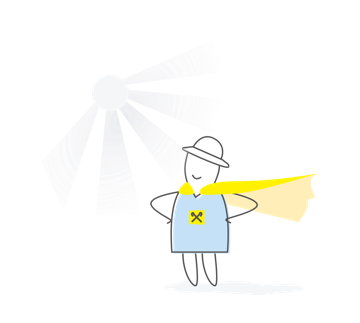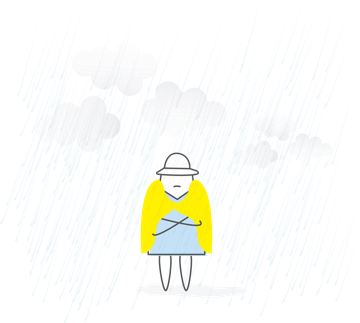Money without contact
Contactless and online payments are a growing trend of our time. And every entrepreneur should take advantage of this. To understand the intricacies of using modern contactless payments for different types of businesses, Pavel Khoroshko, chief manager for the development of electronic banking services at Raiffeisen Bank Aval, helps.
Accepting payments from a smartphone
In retail, now 30%, and in some 90-100% of payments are made by non-cash method through the terminal. The higher the purchase amount, the more often customers choose to pay by credit card. But an increasing percentage of people, especially young people, choose to pay not with a card, but with a smartphone via ApplePay or GooglePay. You can forget the card at home, but rarely does anyone forget the phone. So, a modern terminal that supports contactless payments is a must-have for any store, notes new realities Pavel Horoshko.
As part of the acquiring service, Raiffeisen Bank Aval provides its customers with various types of terminals: fixed and portable. Modern terminals support contactless payment by cards with a chip and magnetic tape, as well as payment by smartphone via ApplePay or GooglePay. This payment takes only a few seconds. Internet access is not required. In the conditions in which Ukrainians lived and bought goods in the last three months, this is a definite advantage. In addition, there are no additional commissions for payment transactions through ApplePay or GooglePay - neither the buyer nor the seller pay extra. And this is also another plus in the karma of this type of payment.
Raiffeisen Bank Aval terminals allow an entrepreneur to easily receive payments via Apple Pay made using any "apple" device: iPhone, iPad, Apple Watch or Mac. Using Apple Pay is considered even more secure than paying with a plastic card, as the buyer does not leave the card number and personal data to the seller. Card numbers are not stored on the device or on Apple servers. To complete any transaction, the buyer simply needs to first verify his identity using Face ID, Touch ID or password. Payments with Google Pay using smartphones or watches on Android are not so protected, but the buyer can protect himself from unauthorized payments by setting a password on the phone, unlocking with a fingerprint or a graphic key.
To activate the acquiring service and start accepting such contactless payments, an entrepreneur just needs to contact the Bank. Maintenance costs up to 2% of each operation (the tariff schedule depends on the amount of turnover - the higher it is, the lower the percentage for use). The terminals are equipped with a SIM card of one of the three mobile operators, the Bank engineer himself selects which one receives the signal better in your area.
But it’s too early to take care of the introduction of FaceID face recognition technology to Ukrainian entrepreneurs: affluent clients do not always want to show their faces when making payments and are afraid of the risk of errors when making payments, says Pavel Horoshko.
Self Catering Area
A new trend in retail is a self-service area without a cashier, when the buyer himself can take the goods, scan the code and pay by card or smartphone. “Raiffeisen Bank Aval here offers individual software solutions and helps build the store’s payment system. There are open solutions implemented by API, but the store should be ready to have its own electronic accounting and control system, ”says the bank’s expert.
The terminal is serviced by the acquiring service for the same 2% of each operation. The main costs here for the entrepreneur are the creation and equipment of the self-service zone itself. Good attention is paid to representatives of retail, as well as HoReCa, that the financial system is preparing to introduce a new generation of POS-terminals - based on Android. Such multi-devices allow not only accepting payments, but also replacing a traditional cash register, as well as integrating a restaurant menu, a warehouse accounting system and other useful functions into the program.
For an entrepreneur, such a terminal is a saving due to the fact that you do not need to buy a separate cash register and engage in its maintenance. In the case of mandatory introduction of PPO announced by the legislator, such terminals can be configured to automatically transfer checks to the fiscal service.
Internet Payments
If the client has his own website or online store, representatives of Raiffeisen Bank Aval will help you configure it to support the acceptance of payments by payment cards - in fact, make a “Pay” button. There are no fees for setting up or connecting a payment service. The entrepreneur pays only 2.2% of the commission on turnover. The mechanism of this option is standard: the buyer will put the goods in the basket, then click "Pay" and go to the payment page. Then he can choose a payment method from the proposed ones and make a payment. Today, payment by card details and Apple Pay is available (allowing you to accept payments from iPhone or Macbook). Payments via Google Pay will be added shortly. The amount comes to the account of the entrepreneur the next day. The advantages of this method of payment are that the seller is guaranteed to receive his money for the goods, and does not wait for them to be transferred, for example, “New Mail”, after the buyer picks up the goods.
The seller gets access to his account, sees all the payments, and if necessary, return the payment to the card for the return of goods by agreement with the buyer will be able to do it yourself, without any contact to the bank.
If a client does not have its own website with goods, and he provides services, the prices of which are calculated individually, the bank can still help him accept card payments via the Internet. This is an e-invoicing service - access to your personal account, where an entrepreneur can create an electronic account and send it by mail or Viber to the buyer, and he will click the "Pay" button and will be sent to the payment page. The commission is standard: 2.2% of the turnover, and the connection to the service is free.
Online cash desk
This is a small marketplace located directly on the bank’s website, where the client can find the right companies and pay for their goods and services. There are collected companies in the areas of activity: taxes, the Internet and TV, insurance, training, sale of building materials, agricultural products, sale of construction equipment, travel companies, utilities. There you can add your company, name and logo - and get rid of the need to invoice. Clients go to the bank’s website, find the right company by name or details and pay for its services. Previously, it was used as a backup channel for payment by card of any bank, during the quarantine period the marketplace was especially lively. The online cash desk service is actively used by companies selling spare parts, building materials, fertilizers, agricultural products, the source said.
Advantages of an online cashier:
1) A business may not make a website, but start accepting payments instantly.
2) The commission for making a payment (1% from Raiffeisen Bank Aval cards or 2% from cards of other banks) can be transferred here to the buyer.
3) The recipient sees the purpose of the payment and details, the name of the payer.
4) The Bank acts as a guarantor of the seller’s integrity.
“Buyers have become more demanding and, faced with cases of fraud, are reluctant to pay on the entrepreneur’s personal card, and ask for an account. If the business accepts payment on a personal card, the buyer will not be able to prove that the service is provided. When paying to the account, the bank, as an intermediary, bears legal responsibility for the actions of the seller. Indeed, when concluding an acquiring agreement, the seller passes the necessary identification and verification. And in case of problems with the purchase, the buyer can contact the bank and return the funds paid, ”concludes Pavel Horoshko.















